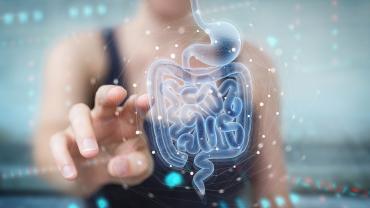
Most practitioners are very familiar with what proteins are and the many roles they play in the body. Today’s diet trends have been hyperfocused on the two other macronutrients, carbohydrates, and fats, oftentimes ostracizing and forgetting that the complex nitrogenous amino acid polypeptide chains that makes up protein are essential for life. Not only is dietary protein critical for synthesizing enzymes, receptors, transporters, hormones, antibodies, and other compounds that build, maintain, and work to repair body tissues (increased amounts are needed for wound healing), it helps satisfy hunger, reducing refined carbohydrate, sugar, and fat cravings, ultimately playing a huge role in body composition. Check out a previous article written about the “Protein Leverage Hypothesis” to understand more about protein’s role in binge eating and kicking those carb cravings to the curb.
Proteins are comprised of three different types of amino acids: essential (cannot be synthesized by humans and must come from the diet), conditionally-essential (sufficiently produced in healthy people, but supplementation may be necessary in times of stress or trauma), and non-essential (produced by the body in sufficient amounts). It is important to note that not all proteins are created equal and that certain sources of protein are superior to others in terms of digestibility and absorption. And it’s important to understand the systems of evaluating protein in order to best serve your clients’ and patients’ individual nutritional needs.
If you haven’t heard of the Protein Digestibility-Corrected Amino Acid Score (PDCAAS) or the Digestible Indispensable Amino Acid Score (DIAAS), you’re not alone. The PDCAAS was created to quantify or “rate” the overall quality of dietary protein sources based on the number of essential amino acids (EAAs) the food contains. It is based on the ratio of the first limiting-essential amino acid in the protein being tested to the “reference” or standard amino acid profile/protein, truncating the score at 100, even though some proteins have a PDCAAS well above 100. For example, if a protein is missing only one EAA, the PDCAAS is zero, and if a protein with a low amount of one EAA scores 30, that protein offers only 30% of that particular EAA. Thus, in theory, only 30% is available for protein synthesis in the body for that specific protein source. Therefore, to meet the EAA requirement, one must consume 3.3 times more of the protein that scores 30 than protein sources that score 100. DIAAS is said to provide a more accurate assessment of protein digestibility than PDCAAS as DIAAS values account for “the true ileal digestibility of individual amino acids in the test protein”.
So, what types of proteins should your patients be consuming more regularly? Obviously, dietary protein sources that rank highest may be the preferred sources to ensure adequate amino acid intake. Foods that contain all 9 of the essential amino acids in the correct amounts are at the top of the list (well above 100%), primarily consisting of animal proteins such as eggs, whey, casein, beef, poultry, and seafood. With the exception of soybean, vegetable-based protein sources generally fall below 80% on the DIAAS. Cereal grain proteins like wheat, rice and corn are limited in certain amino acids such as lysine, threonine, and tryptophan whereas legumes (e.g., beans, peas, lentils, peanuts) are sufficient in those but limited in sulfur-containing amino acids, hence combining the two is necessary to achieve complete protein ingestion. According to an article published in Applied Physiology, Nutrition, and Metabolism, “high-quality animal proteins require far less energy intake to meet essential amino acid needs than lower quality plant proteins”, but that doesn’t necessarily mean that only eating meat and other animal protein is necessary and that perhaps a balance between animal and plant-based proteins is key for optimal health and wellness.
It’s important that health care practitioners consider the PDCAAS/DIAAS of the diet as a whole, looking at the overall intake of amino acids in the daily diet to fully understand where clients or patients may need more protein support. In situations where there is an inadequate intake of food, especially seen in the elderly (decreased appetite, sarcopenia), in those with lowered digestive capacity, loss of lean body mass, and malabsorption issues, protein supplementation may be necessary to reach 100%. This is when protein powders – whey, pea, bone broth, or collagen – may make all the difference in helping patients achieve their health goals, whether that be for body composition changes, weight loss/weight gain, wound healing and recovery, or increased muscle mass.
By Caitlin Higgins, MS, CNS, LDN